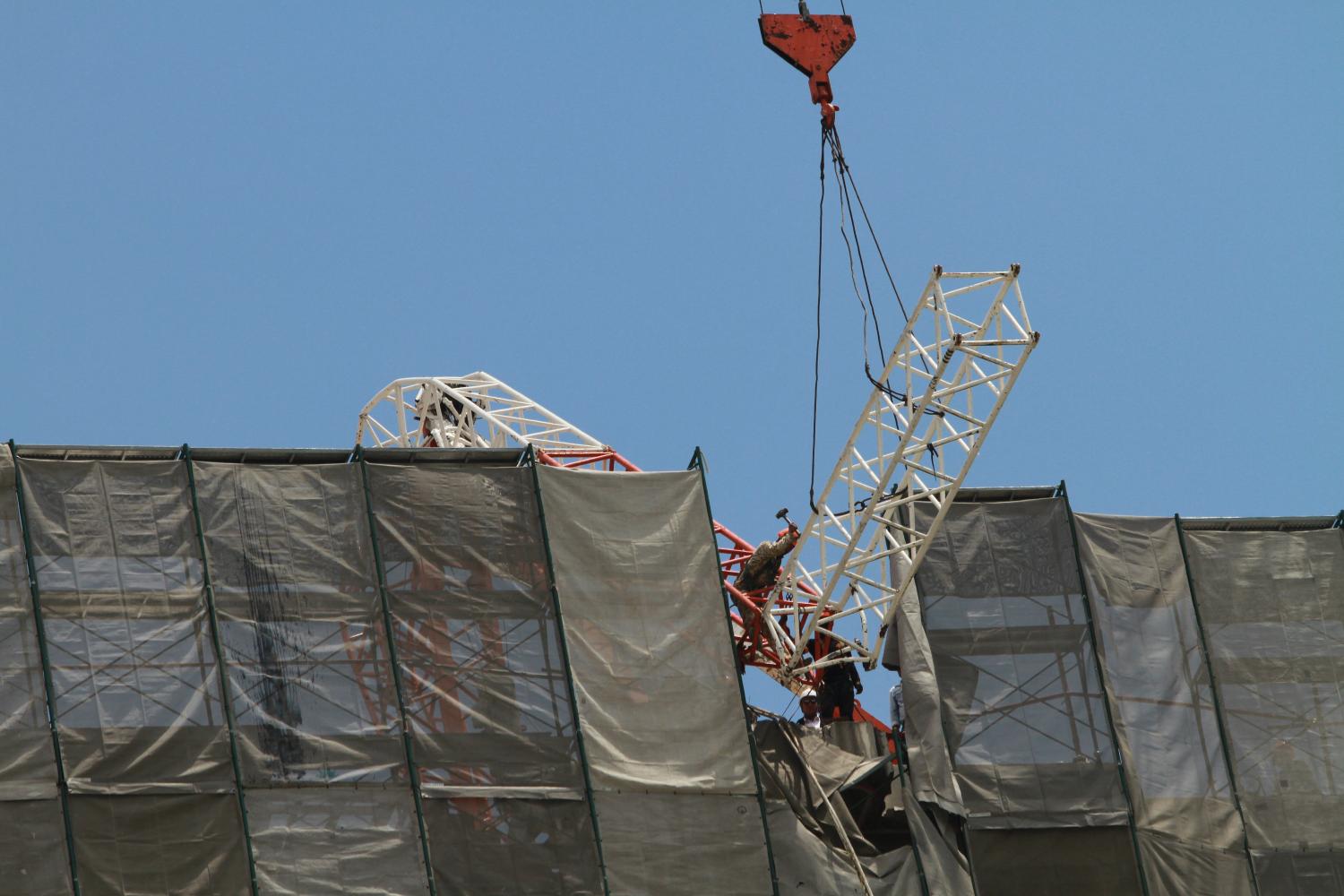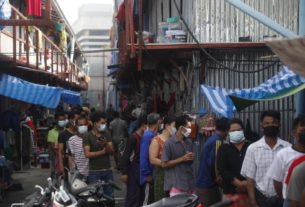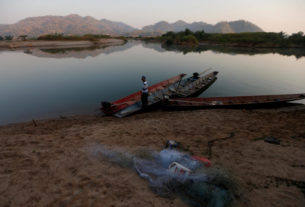
Training workers a better way to stop tower crane calamities
29 June 2019
Crane accidents are increasingly becoming a public hazard. However, while stricter law enforcement is a must, job training is no less important in order to improve safety on construction sites.
A week after the crane accident that caused several injuries at the Assumption Convent School in Bang Rak district, police finally arrested a crane driver, who happened to be a Cambodian national. According to labour regulations, only Thai nationals are allowed to operate heavy machinery such as boilers and cranes. The investigation also found that the project operator defied an order issued by the Bang Rak district office to suspend construction work from April 1.
The crane accident at the Assumption Convent School is not the first and definitely won’t be the last. Please pardon my doom mongering, but we can never walk without the fear that heavy materials from a crane might fall and hit our heads, as long as the government fails to step in and implement a system to improve workers’ skills and knowledge of safety standards.
According to the Engineering Institute of Thailand (EIT), there were 11 accidents, excluding the latest one at the Assumption Convent School, between 2016 and 2019 — or at least three per year. There are currently hundred of cranes operating on large-scale construction sites across the country, 50% in Bangkok.
In fact, experts have proposed measures to make crane operations safer. Among them is a legal amendment that categorises cranes as buildings, in order to improve codes and the monitoring system. I doubt that the amendment will make cranes safer, because it’s not only a matter of legal loopholes, but also of a lack of knowledge and expertise on the part of crane operators.
The harsh reality is that those who are involved in the operation process, including the installation, handling and dismantling of cranes, do not receive proper training, according to Harit Srinukool, head of the EIT’s subcommittee on lifting and cranes. It has been found that 80% of accidents take place during installation, dismantling and height adjustments of the cranes, while the other 20% were a result of errors made by crane operators.
The current law does not require the presence of safety engineers during the installation process, neither does it require developers to submit a plan on how to remove, install or change the height of a crane. Crane drivers, signallers and installers are not required to obtain any permits or special training.
The quality of cranes in Thailand is also a big problem. Many are secondhand and some are almost 40 years old. Developed nations such as Singapore, Japan, the US and European countries have expiry dates for cranes, and most of those expired machines are resold in developing countries like Thailand. If that were not enough, those old cranes rarely have spare parts, so Thai companies must use their expertise to improvise by making their own spare parts for them.
Most construction labourers are also migrant workers who can only communicate using rudimentary Thai. Many crane operators are also not Thai nationals, despite a law stipulating they must be. “It is a risky and high-pressure job with relatively low pay. Accidents mean serious injuries or death, and not many Thais want to do that. So the job goes to migrant labourers,” said Mr Harit.
That raises the question of whether these migrant labourers can clearly understand what the safety engineers or crane supervision staff are saying, if there are any on the site to begin with. But having Thai crane operators does not necessarily ensure safety.
“Most crane operators are self taught, and most of them learn by watching the senior drivers in action. They do not read the manuals because most of the manuals are in English, German, Japanese and, more recently, Chinese,” he said.
Amid the rise in crane accidents, the Labour Ministry is revising the regulations on the safety of workers operating heavy machines, boilers and cranes. One of the amendments will require safety engineers to submit an installation, adjustment and removal plan to authorities.
But apart from the revisions, the ministry needs to provide training on how to operate heavy machines like cranes. Mr Harit noted that there are few workshops or classes that teach workers how to operate cranes properly. The EIT holds training courses once in a while, but not many companies send their employees on them because each course costs around 5,000 baht.
The government must invest in educating workers, regardless of their nationality. Without better training for crane operators, accidents like the one at the Assumption Convent School or the crane collapse on Rama III Road in January that killed five workers and injured five others will happen again.
Anchalee Kongrut is an assistant news editor of the Bangkok Post.
Source: https://www.bangkokpost.com/opinion/opinion/1703948/train-workers-better-to-stop-crane-calamities



